Content
If you choose the right variety of pear tree for the existing climatic conditions and take care of it, you can get a rich harvest of delicious fruits. Many varieties are not picky about the environment and soil, but they are sometimes susceptible to a fungal disease called pear rust. In case of pear disease, orange spots on the leaves are the first symptom and signal to fight against this disease.
What is pear rust
Rust is recognized as one of the most common and dangerous fungal diseases that can lead to the death of a pear tree. The disease is called so because its external manifestation is very similar to metal corrosion. Orange spots with a dark center on pear leaves are where fungal spores form.
When neglected, they spread to trunks, shoots and even fruits.There is a disturbance in the mode of fruit ripening and crop growth. The causative agent of this disease is the pathogenic fungus Gymnosporangium sabinae.
Causes of disease development and provoking factors
There are 2 main types of fungus that cause rust:
- a fungus that only needs one host for its entire development cycle;
- and another representative that needs 2 different plants to fully live its life.
Rust, which causes red spots on pear leaves, refers to a fungal disease that develops on 2 different plants. The first host on which it parasitizes is some species of ornamental juniper. Having matured and overwintered on its first host, rust spores can spread hundreds of kilometers with the help of the wind and, having found a 2nd host in the form of a pear, apple tree, quince, or hawthorn, can continue their life cycle on them.
The susceptibility of pear trees to rust disease depends on many factors that need to be taken into account when growing fruit trees. Favors the appearance of brown spots on pear leaves:
- increased air humidity;
- failure to obtain the required amount of nutrients;
- closely spaced plantings of juniper;
- weakened immunity of trees;
- dense crown.
Several million spores ripen on 1 juniper bush.
Disease development cycle
The orange fungus first appears on pine needles, cones, and juniper branches. These parts look yellowed and dried out.Then the fungus moves to the trunk and shoots of the tree, forms a mycelium in the form of thickenings, swellings and overwinters under the bark. In spring, gelatinous telytospores form in these places. They look like conical growths. Further, upon maturation, basidiospores appear.
Basidios dry out after spring rain, break away from their first host and are carried by the wind over long distances. Once on a pear, they quickly parasitize it. Developing on the fruit tree, the fungus causes orange spots on the leaves and enters a stage of its development in which it must return to the juniper for further life.
Signs of illness
You can notice the first traces of the disease in the spring, when the leaves of the pear tree bloom. Small yellow spots appear on pear leaves. Gradually they enlarge and become orange in color with black dots and gray stripes in the middle.
If you do not take measures to treat rust, then after about a month, yellow growths in the form of papillae appear on the underside of the pear leaves. These are the sites where epidiospores form, which are subsequently transported by the wind to the juniper.
At the beginning of its settlement on a fruit tree, rust does not cause much harm to the pear. But if you do not fight it, it will spread throughout the entire plant, the leaves on the pear will become covered with rusty spots, begin to fly off prematurely, the shoots will slow down their growth, and acquire a short and thick shape. The fruits will fall off unripe.
Due to premature leaf fall, the tree will not receive enough photosynthesis products, its immunity will weaken, and it will become less resistant to scab disease and pests. Winter hardiness will also decrease, which is why the pear may not be revived after severe frosts.
What to do if there are yellow spots on pear leaves
When rusty spots appear on the pear leaves, all that remains is to take specific measures to combat the fungus. To do this, various methods are used depending on the severity of the disease. Spraying with copper and sulfur-containing preparations gives good results. Mechanical work with the consequences of the disease is important.
Mechanical treatment of affected trees
If rust in the form of orange spots has spread on the pear, then measures must be taken to eliminate the spores, which are the source of infection, as much as possible. For this:
- Trim and burn all diseased, dry and orange branches and stems located in the juniper area. If it is very badly affected, then cut down the tree completely and burn it.
- If possible, plant a row of dense trees to separate the pear plantings from the juniper plantings, even if they grow several kilometers away.
- Trim branches (5-10 cm below the lesion border) of pears with dark spots on the leaves, infected with rust. Collect fallen leaves. Burn it all. Treat the sections with 5% copper sulfate and cover the wounds with garden varnish.
- After destroying the affected parts of the tree, the soil around the pear must be treated with Bordeaux mixture or urea.
All tools used for pruning and processing diseased trees must be disinfected.
Fungicides for pear rust
Rust fungus spores are killed when sprayed with fungicides designed to combat this particular disease. There are many such remedies that are used to treat plants from several fungal diseases at once. For example, from scab, powdery mildew, rust. If treatment with such anti-scab drugs is carried out, then there is no need to treat the tree against orange spots.
Each product has its own calendar for its effective use, which must be followed, because measures to combat pear rust in the fall differ from those in the spring.
How to fight rust on a pear with copper-containing preparations
Copper-based products have long been used in gardening to combat various fungal plant diseases, including orange spots. “Bordeaux liquid”, “Bayleton”, “Strobi”, “Raek” are widely used preparations that are harmless to beneficial insects and warm-blooded animals. They are often compatible with pesticides, but not all fungicides can be used.
The treatment of fruit trees with these preparations should be carried out using a fine spray method for more effective use of the fungicide. In this case, liquid does not drain from the leaves. She manages to influence the spores of rust fungus.
Fighting rust on pears with colloidal sulfur
Treating the affected tree with a 0.4% solution of colloidal sulfur 5 times during the entire growing season allows you to get rid of orange spots on the pear. The effectiveness of the action occurs due to the release of vapors. It is the vapors that kill fungal spores without penetrating into the plant.
Spraying with colloidal sulfur is carried out:
- after the buds swell, but before the leaves appear;
- before flowering begins;
- after flowering;
- during the formation of the ovary;
- after leaf fall.
Other drugs for pear rust
A good result is obtained by spraying the pear tree four times with chemical agents against pear rust - “Fitosporin-M”, “Poliram”, “Skor”. Each of them has its own recommendations that must be followed.
There are folk remedies to combat rust. They are effective when the disease is at the initial stage of development, or they are used as preventive measures. This is a solution of wood ash, an infusion of slurry, herbs such as horsetail, marigold, and mullein.
Preventive measures
In the fight against fungal rust, mandatory attention should be paid to two types of trees - juniper and pear. Constant inspection of the juniper on the site should be carried out regularly. When the first signs are detected, dry branches and leaves should be immediately cut off and burned.
Preventive treatment of pear and juniper in the area before brown spots appear on the leaves is the most far-sighted and effective measure. Such measures using fungicides begin in the spring and are carried out at regular intervals throughout the growing season. They coincide with the treatment for scab and powdery mildew:
- The first time pears are sprayed is carried out in the spring, 2 weeks before flowering. At this time, basidiospores have not yet had time to colonize the pear. Fitosporin-M is recommended.
- The second treatment of fruit trees is carried out after flowering. This is the time for active dispersal of fungal spores. The chemicals will kill them without allowing them to spread to the pear.
- The third preventive measure is repeated approximately 20 days after the second, when ovaries measuring 3-4 cm in length have already appeared.
These actions will protect pear plantings not only from fungal rust, but also from other diseases. Preventive measures also include timely application of fertilizers to increase the immunity and stability of the pear. During the summer, you need to periodically pour diluted wood ash under the root - 500 g per 10 liters of water.
Varieties resistant to disease
Not all pear varieties react equally to fungal diseases, in particular rust. There are pears that are highly susceptible to the disease, they often have red spots on the leaves, and there are more resistant ones. The most resistant varieties are considered:
- Bere Bosc – autumn variety, moderately tolerates severe frosts. Gives a high yield under favorable conditions and is resistant to fungal diseases. The fruits are large, regular in shape, brown-golden in color.
- Summer Williams – a variety that requires fertile soil and regular fertilization, has average resistance to frost and drought. The fruits are medium in size, set in 2-3 pieces, and have a pleasant taste. Resistant to diseases, but susceptible to attack by insect pests.
- curé – winter variety, frost-resistant and drought-resistant, undemanding to soil conditions. Under favorable conditions, it resists fungal diseases well. In a weakened state, he may develop scab.
- Clapp's Favorite – a summer variety, produces a harvest in late July – early August.The fruits are medium or large, beautiful, with a carmine side. It is famous for its high winter hardiness and drought resistance. When carrying out preventive spraying, it does not suffer from fungal diseases.
- Yakovlevskaya – winter-hardy variety with high yield. In favorable conditions, it can retain its taste and commercial qualities for 6 months. It is famous for its complex resistance to fungal diseases.
Experience shows that the most resistant against fungal diseases are varieties with strong immunity and good tolerance to frosty winters.
Conclusion
When a pear disease occurs, orange spots on the leaves can lead to the death of the entire crop if you do not start fighting rust fungus spores in time. But the best method for ensuring healthy fruit plantings is preventive care, which includes not only regular spraying of the garden with appropriate fungicides, but also timely watering and fertilizing with fertilizers. Growing a healthy, rich garden is like raising children.
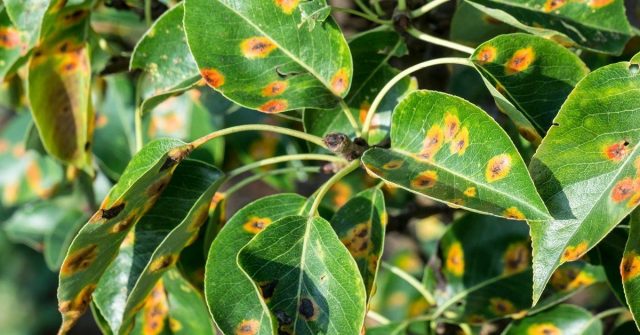
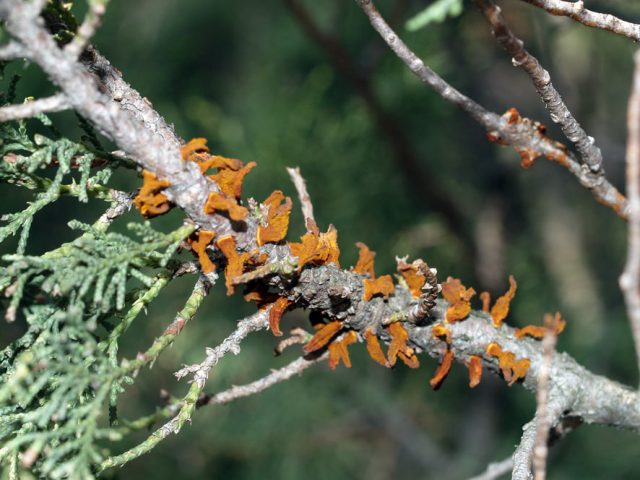
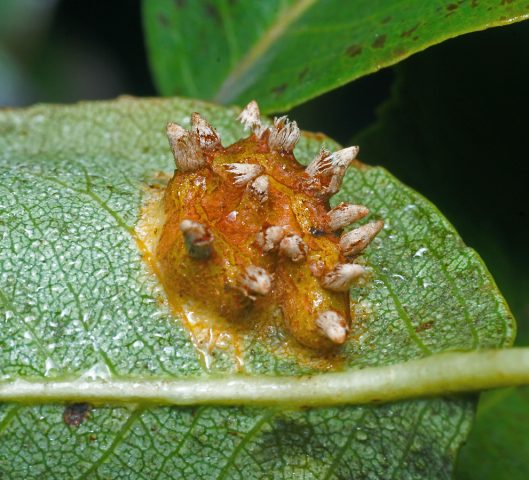
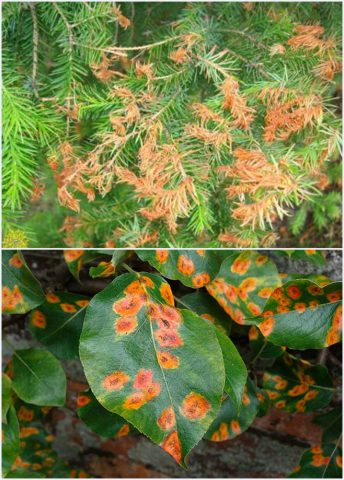
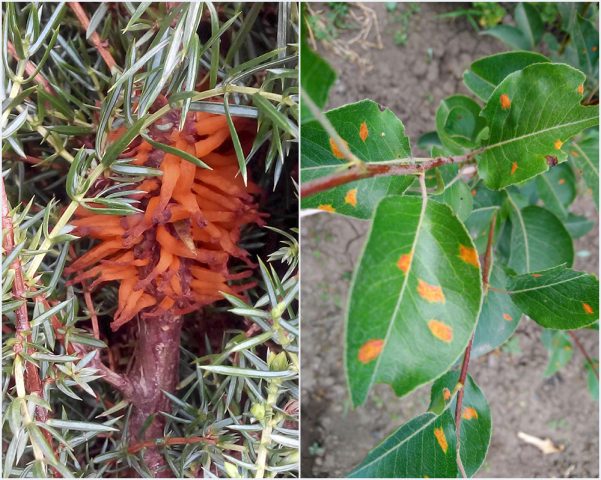
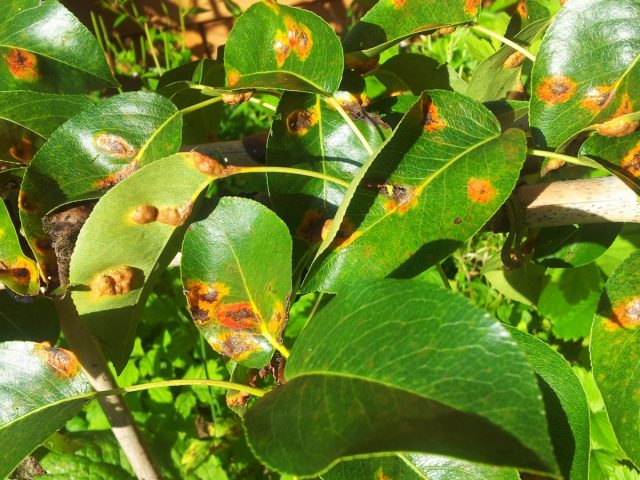
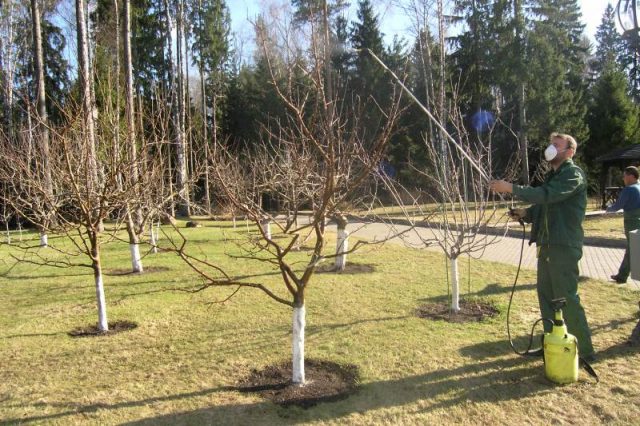
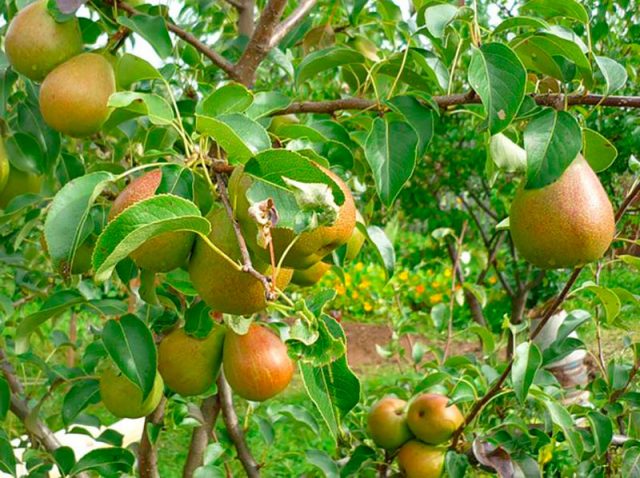
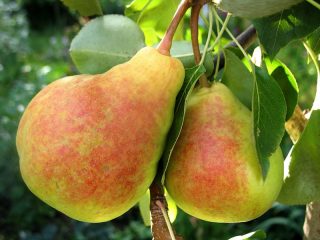

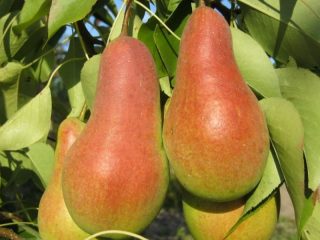
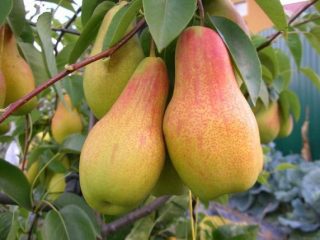
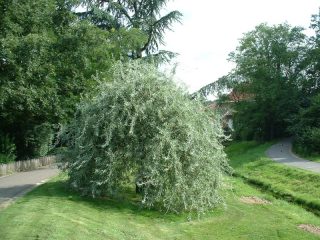
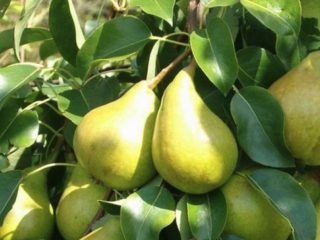
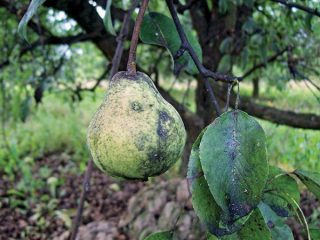
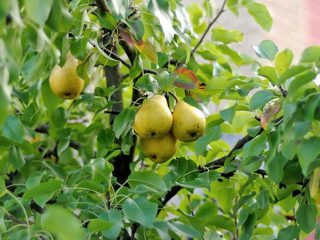
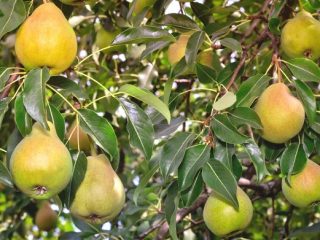
Hello! Is it possible to treat a young pear seedling 3-4 years old from such stains with Bordeaux mixture?
Thanks for the article, but I still need some advice. Is it possible to treat a young tree with urea and what percentage of the solution?
Good afternoon
Young trees that are at least 3-4 years old can be treated with urea.And even in this case, the concentration of the solution must be reduced. The recommended dosage for treating mature trees is 0.5 kg of urea per 10 liters of water. For young seedlings, it is advisable to prepare a solution at the rate of 0.3 kg per 10 liters of water.
Garden trees can be treated both in spring and autumn. Only in the autumn, in addition to the crown and trunks of trees, it is necessary to treat the soil in the tree trunk circle.